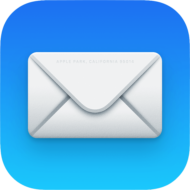
Apple’s App Tracking Transparency allows you to choose whether to allow an app to track your activity across other companies’ apps and websites for advertising or purposes. However, it doesn’t stop the tracking in your macOS Mail’s email inbox.
Unsolicited marketing emails can sometimes tell if you’ve opened their email, when you opened it, and maybe even where you were when you opened it, thanks to tracking methods employed by marketing platforms like MailChimp. (This isn’t necessarily a dig at MailChimp, as it can be a useful tool for some folks.)
The way those companies/folks send you unsolicited emails and then track them is by using a “tracking pixel” embedded in their unwanted emails.
Email Tracking Pixels
Tracking pixels are typically a GIF or PNG image file as small as 1×1 pixels that are inserted into the header, footer, or body of an email. When the message is opened in your email client, code within the pixel silently sends this information back to the company.
Think it’s not a problem? The BBC reports that most emails now contain such trackers. This information can then be used to determine the impact of a specific email campaign, as well as to feed into more detailed customer profiles. Though defenders of the trackers claim they’re a commonplace marketing tactic, Hey’s co-founder David Heinemeier Hansson says they amount to a “grotesque invasion of privacy.”
A Third-Party Solution
Hey is a company that provides a service that keeps your email private. You can try it free; however, you’ll need to pay $12/month or $99/year to continue to use the service. The following graphic is courtesy of Hey:
The macOS Solution
Apple also offers a solution, but it’s more limited in scope. In macOS in the Mail app, choose “Mail > Preferences > Viewing” and uncheck “Load remote content in messages.”
For iOS/iPadOS
In iOS and iPadOS, go to “Settings > Mail” and disable Load Remote Images.
Once you’ve done this, the Mail app on your Macs, iPhones, and iPads will no longer load tracking pixels. If an email contains images, you’ll see a banner at the top of the screen, asking if you want to load them. This setting only blocks remote images. Any images actually attached to the email — like a friend might send you — will work as usual.
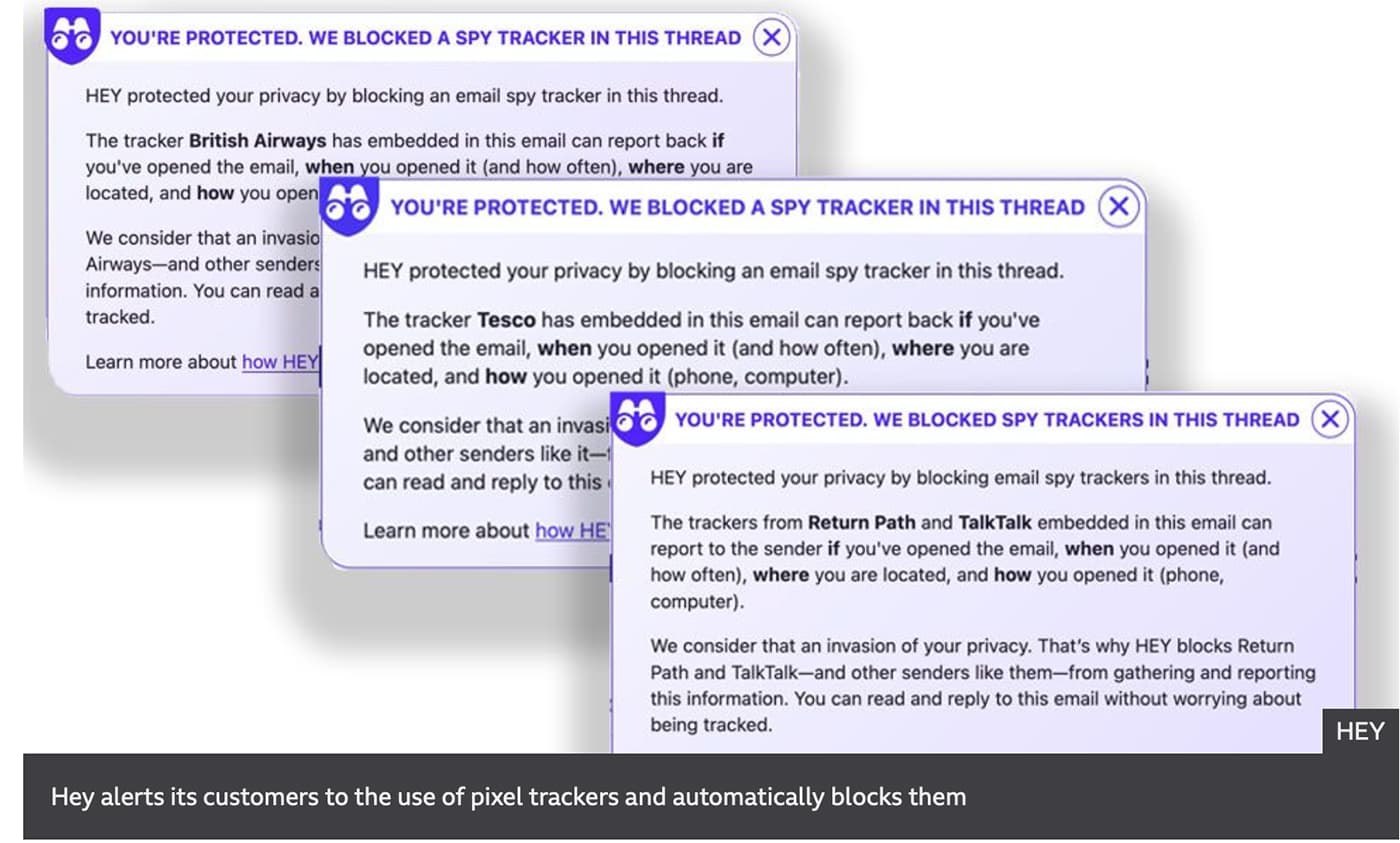

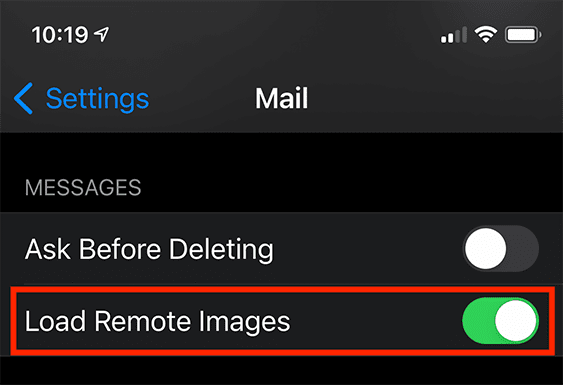
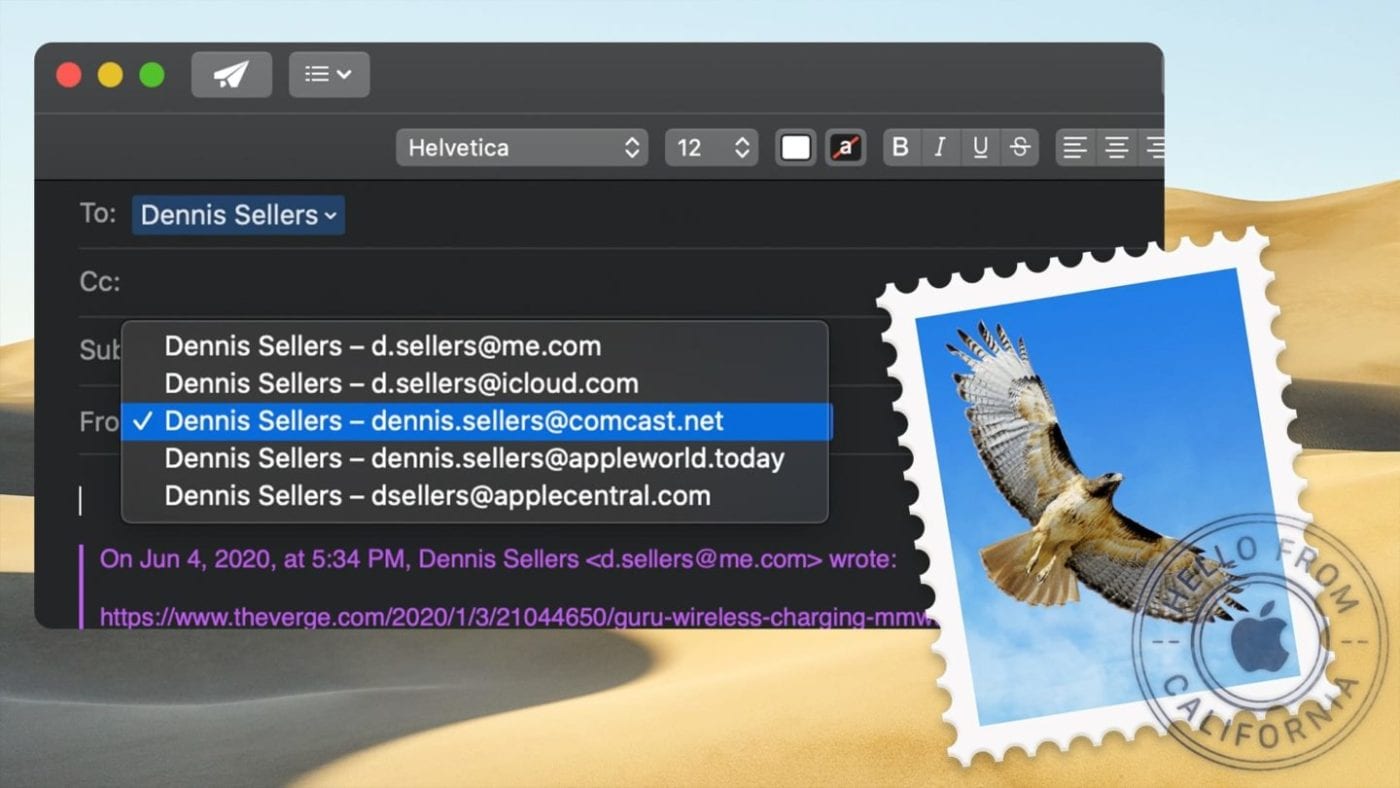
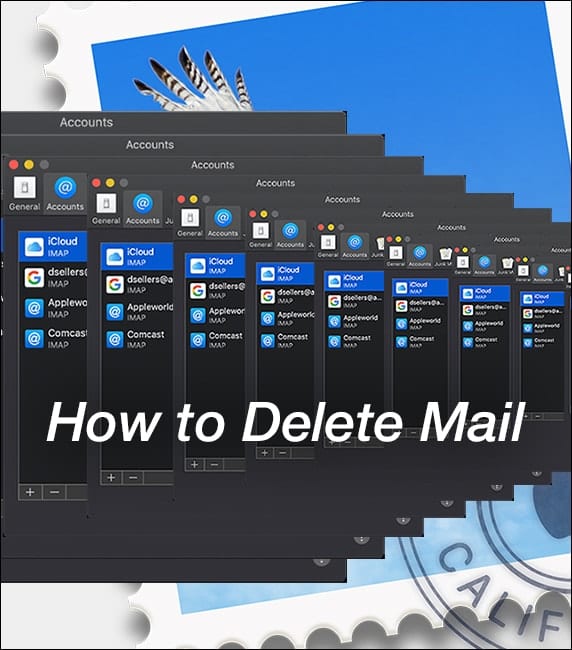







I tried this and 99% of emails ask me to load images. I’m not sure If my experience is typical, but I’m not sure it’s going to work for me.
Anyone else have this experience?
Thanks for making me aware of the tracking portion of emails though.
Dennis, thanks for this, but I have a question:
I unchecked the ‘Load Remote Content in Messages’ box as suggested, and now virtually no pictures appear in any of my emails. Have I done something wrong?
When I unchecked the box “Load remote content in messages” all the pictures disappeared from my Rocket Yard Weekly Newsletter that pointed me to this article.
Oops!
Turning off the remote content so no images load automatically is certainly a sacrifice many people don’t want to make.
LittleSnitch does a great job of this.
Other than the alert message that Hey gives, what more does it provide for the $12/mo over what Apple Mail provides? And what does Apple Mail lack beyond the alert?
The article does not explain.
A great feature in Apple Mail from OS 10.6.8 what is the ability to “Bounce” an email. This was a great feature that could prove useful in many cases. Critics would point out that experts could tell it was not a true Bounce, nevertheless, it worked for people who are constantly sending you things and you were trying to discourage further emails. I would love to find a way to bring back “Bounce”.
On second thought, I’m not loading this application. Their normal method is to give you a different email account which (I believe) goes through their email server first, scanning for tracking pixels, before delivering your email to your email application. I’ll wait to see how iCloud relay works hoping it has a way to handle this tracking. I also believe this is something Apple needs to include in their Mail app along with their Mail server.
There is also a Mail plugin that can help: https://github.com/apparition47/MailTrackerBlocker
Thanks for the tip for MailTrackerBlocker!
Interesting. I changed my Mac and iPhone and the first email I got after changing these settings, from Eddie Bauer, had no images although it did say it had remote content. Two things: 1) “Any images actually attached to the email — which is how legit emails should behave — will work as usual.” I guess Eddie Bauer doesn’t know how to code, and 2) it will be interesting to see how many of my email subscriptions actually code the same way. I viewed my email using Mail’s Raw Source capability and found 55 http calls. The strange thing is my actual email was very large, probably close to the same size if it had included the images. I’m going to try out the Hey software to see if it finds a tracker in each subscribed email I get. Eddie Bauer really doesn’t need to add a tracking pixel because they already have the ability to track me every time their standard images are accessed simply by opening the email. It used to be Windows was the only OS where you didn’t want to open emails because opening them could download malware but this email from Eddie Bauer could be doing the same thing using remote image calls.
Just noticed an email opened on my iMac is treated differently than the same one opened on my iPhone. It opened with the images on macOS but not on iOS.
I find that most email doesn’t have images built into the message but only appear if I load the remote content. So depending on the source and nature of the email, I’ll click the button to load the remote content which then shows me pictures but probably often gives the sender the notice that I’ve read the message. I don’t worry about that “read notice” a lot, but I do avoid loading the remote content of messages from questionable sources or things I’m not that interested in.
I agree about your first sentence. My original comment, which doesn’t appear to have been posted, had to do with tracking pixel and my hope that Apple could figure out how to address this instead of using a different email through a third-arty email server to strip them. There are times I like to see the images in the email without pressing another button other than the delete one. Apple should be looking into the practice and figure out a way to stop it so we don’t have to. Of course, I mean only Apple Mail users since Apple can’t do anything about other email services.